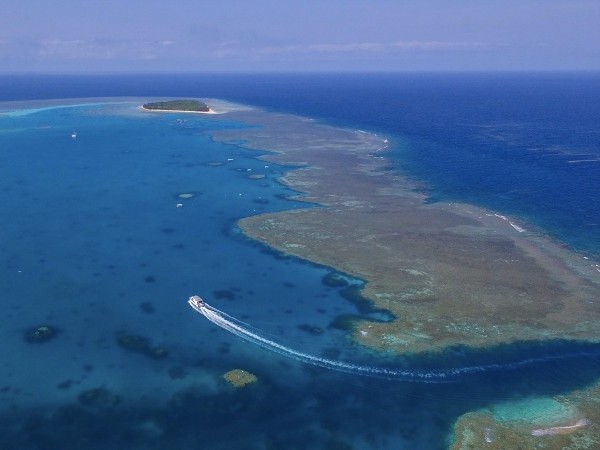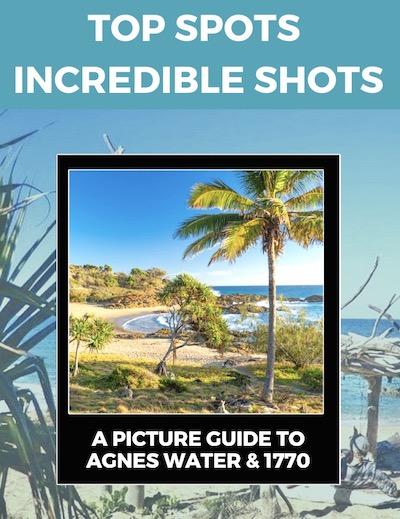Southern Great Barrier Reef
The towns of Agnes Water & 1770 are a stone’s throw away from the Southern Great Barrier Reef. Here are the different islands you can reach from here!

The Bunker Group including Lady Elliot, Lady Musgrave, Northwest & Masthead Islands & Fitzroy Reef
Everything you need for a fantastic holiday can be found right here in the Southern Great Barrier Reef.
The Southern Great Barrier Reef offers visitors to Queensland, Australia the chance to see large hard coral reefs firsthand and join colourful fish and big marine life like turtles and manta rays for a swim. At just over 4 hours drive from Brisbane, this unique region can easily be included as part of a larger itinerary.
Take a trip to the reef where you can relax on tropical islands and swim offshore with turtles and manta rays above the amazing barrier reef coral. Back on land, there are historical sites, museums and galleries to be explored.
Lady Musgrave Island
An underwater oasis is waiting to be discovered as you pop on your snorkel and mask to reveal one of the Great Barrier Reef’s biggest swimming pools at Lady Musgrave Island. The protected lagoon is truly unique on this coral cay island, where you can play castaway on a bare-bones camping adventure or hop aboard a luxury vessel and visit in star-worthy style.
Lady Musgrave Island is accessible on a day trip from the Town of 1770 (view tour operators). This lovely coral cay is surrounded by a long fringing reef and has a large lagoon that is a popular diving and snorkelling site. Scattered throughout the lagoon are countless coral heads, and with the depth, rarely more than eight meters divers have a lot of time to explore. The calm waters of the lagoon allow delicate hard corals to flourish, including large patches of staghorn coral. While most of the reef fish seen are small, the ones under the permanent pontoon certainly aren’t, as schools of sweetlips, goatfish, snapper, rabbitfish, damsels and a few gropers shelter here.


Turtles and Flying Manta Rays
Get up close with ‘flying’ manta rays, view turtles smoothly swimming through the ocean, try to pick out what reef fish you know from the abundant life under the sea. If you are lucky enough to be visiting between November to March you might see turtles carefully laying their clutches of eggs (November to January) or babies sprouting forth for their first dip in the big blue yonder (January to March). Take an island walk and take in the abundant flora and fauna unique to this island. You can spend as little as one day or weeks playing castaway and discovering this uninhabited reef island – nature’s aquarium, aviary, and rookery.
Fitzroy Reef
Fitzroy Reef is the largest reef in the Bunker Group and is a 3650 ha drying, closed ring reef with a large, deep (6-10m) lagoon that can be entered through two narrow, natural channels
Although no cay is present at the reef, an intermittent sand body often appears at low tide on the south-western end of the reef. The presence of a lagoon attracts many travelling vessels, as the lagoon is a good anchorage
The corals at Fitzroy Reef are diverse and are one of the important values of the area. The lagoon includes well-developed coral communities on bommies interspersed with large tracts of sand in addition to a large community of branching corals on the lagoon floor. Near the lagoon entrance is a group of bommies that have moderate to dense coral cover. This area is the prime site for activities such as snorkelling and glass bottom boat coral viewing.
The reef flat and lagoon are feeding areas for green, hawksbill, and loggerhead turtles. As a lagoonal reef system, Fitzroy Reef is important to turtles, particularly to loggerhead turtles, which feed on molluscs in the lagoon floor sands. It is estimated that the annual population of turtles at Fitzroy Reef is approximately 1,000 green turtles, 100 hawksbills, and 100 loggerhead turtles. These numbers represent a small but extremely important component of the turtle populations of the southern Great Barrier Reef.
Lady Elliot
Lady Elliot Island is the southernmost coral cay of the Great Barrier Reef, Australia. The island lies 46 nautical miles (85 km; 53 mi) north-east of Bundaberg and covers an area of approximately 45 hectares (110 acres). It is part of the Capricorn and Bunker Group of islands and is owned by the Commonwealth of Australia.
Lady Elliot Island is located within the ‘Green Zone’ of the Great Barrier Reef Marine Park, which is the highest possible classification designated by the Great Barrier Reef Marine Park Authority. Marine National Park Green Zones protect the biodiversity within the Great Barrier Reef Marine Park by protecting important breeding and nursery areas such as seagrass beds, mangrove communities, deepwater shoals, and reefs.
The island is particularly renowned for its scuba diving and snorkelling, as its location far offshore at the southern end of the Great Barrier Reef results in excellent water clarity.
Masthead Island
Masthead Island is a coral cay located in the southern Great Barrier Reef, 60 kilometres northeast of Gladstone, Queensland. The island is a protected area and forms part of Capricornia Cays National Park. Masthead Island is one of the most undisturbed cays in the national park because human and feral animal impacts have been rare. The cay covers an area of 0.45 square kilometres (0.17 sq mi) and is surrounded by a coral reef that is partially exposed at low-tide. It is part of the Capricornia Cays Important Bird Area.[2]
The island is closed to the public from mid-October to Easter to protect nesting seabirds and turtle hatchlings. At other times the island is open for camping, however, there are no facilities provided.
North West Island
North West Island is a coral cay in the southern Great Barrier Reef, located 75 kilometers northeast of Gladstone, Queensland. North West Island forms part of Capricornia Cays National Park and with an area of 1.05 km2, the island is the second largest coral cay in the Great Barrier Reef.

